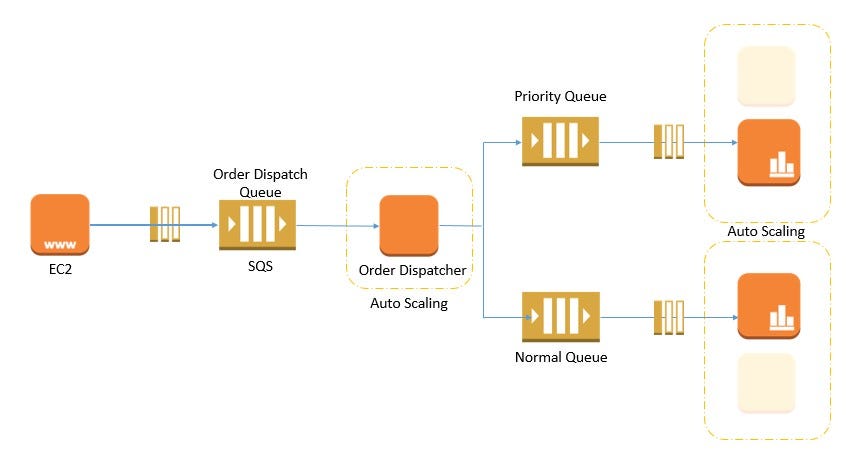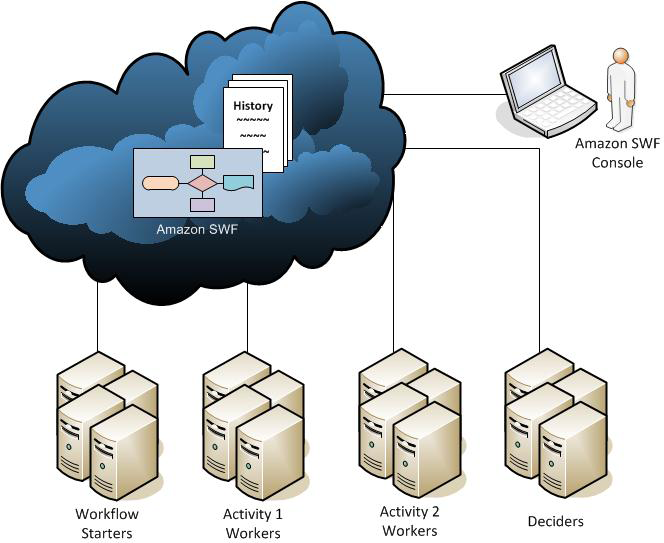SQS (Simple Queue Service) vs SWF (Simple Workflow Service) in AWS

TL;DR:
SQS is a service that allows you to queue messages giving you the ability to de-couple your environment. SQS will store and hold these messages in a highly scalable environment to be processed by another service or application as required.

SWF is a different service altogether, it’s used to help you organize and process a sequential order of events. It can be used to track and manage your workflow of your processes.
SQS is a fully managed message queuing service that enables you to decouple and scale microservices, distributed systems, and serverless applications. SQS eliminates the complexity and overhead associated with managing and operating message oriented middleware, and empowers developers to focus on differentiating work. Using SQS, you can send, store, and receive messages between software components at any volume, without losing messages or requiring other services to be available.
SWF helps developers build, run, and scale background jobs that have parallel or sequential steps. You can think of Amazon SWF as a fully-managed state tracker and task coordinator in the Cloud.
If your app’s steps take more than 500 milliseconds to complete, you need to track the state of processing, and you need to recover or retry if a task fails, Amazon SWF can help you.
Both Amazon SQS and Amazon SWF are services that facilitate the integration of applications or microservices:
- Amazon Simple Queue Service (Amazon SQS) offers reliable, highly-scalable hosted queues for storing messages while they travel between applications or microservices. Amazon SQS lets you move data between distributed application components and helps you decouple these components.
- Amazon Simple Workflow Service (Amazon SWF) is a web service that makes it easy to coordinate work across distributed application components.
The following are the main differences between Amazon SQS and Amazon SWF:
- Amazon SWF API actions are task-oriented. Amazon SQS API actions are message-oriented.
- Amazon SWF keeps track of all tasks and events in an application. Amazon SQS requires you to implement your own application-level tracking, especially if your application uses multiple queues.
- The Amazon SWF Console and visibility APIs provide an application-centric view that lets you search for executions, drill down into an execution’s details, and administer executions. Amazon SQS requires implementing such additional functionality.
- Amazon SWF offers several features that facilitate application development, such as passing data between tasks, signaling, and flexibility in distributing tasks. Amazon SQS requires you to implement some application-level functionality.
- In addition to a core SDK that calls service APIs, Amazon SWF provides the AWS Flow Framework with which you can write distributed applications using programming constructs that structure asynchronous interactions.
While you can use Amazon SQS to build basic workflows to coordinate your distributed application, you can get this facility out-of-the-box with Amazon SWF, alongside other application-level capabilities.
